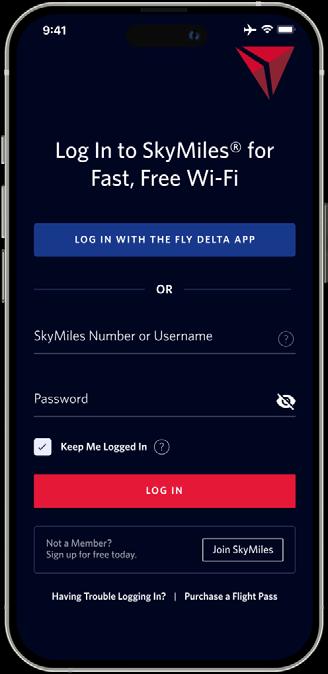Customer Experience (CX)





Hello Friends,
We are proud to present our inaugural Customer Experience Insights report. This survey was commissioned and led by our Evolving Experience© practice. We believe that experience is the path to sustainable growth, fueled by engaged teams and inspirational leaders.
We are thankful for the fantastic team who helped us create the following report and for those who shared their opinions with us by lending their voice to the survey.
At 4xi we value the power of a collective and collaborative approach to leadership and experience. We are excited to share the results of this groundbreaking survey and the actionable insights that you can utilize to move the needle on growth and customer retention.
Data without context is useless, so our objective was not only to collect data directly, but to layer with verbatim comments, industry metrics, and best practices to put this information to use.
In this report, we tackle the fundamentals of customer service and experience as well as shine a light on the evolving preferences of today’s consumers. Regardless of your industry, you will find meaningful information to improve your business on a daily basis.
Experience is the ultimate differentiator. It levels the playing field and sets premier organizations apart from the competition. When it comes to fueling those experiences, there is no substitute for data to inform decision-making and prioritizing what matters most to customers.
This drives decision-making and continuous improvement that can be a key differentiator in today’s noisy and competitive environment.
Personalization, quality, and ease of use are top of mind for customers each day, and brands that understand their customers and deliver on their expectations will find themselves well-positioned to build ongoing loyalty.
Thank you for joining us on this journey of experience and continuous improvement. Together we can create customer-centric cultures that thrive in this evolving marketplace.
Sincerely,

Tony Johnson Chief Experience Officer 4xi Global Consulting
t: (606)356-7447
e: tonyjohnson@4xiconsulting.com




Customer experience has emerged as a cornerstone of brand success, with nearly all consumers ranking it as a critical factor in their interactions. As modern customers evaluate brands, reputation, and image often take precedence, but value for money and quality are not far behind in their decision-making calculus. In a competitive landscape where over 90% of consumers are willing to abandon a brand after a single poor experience, companies must prioritize satisfaction and seamless interactions.
Online platforms lead the way as the preferred channels for engagement, supplemented by growing reliance on social media and email, businesses must balance digital convenience with human connection.
Understanding is the first step in a successful Customer Experience (CX) strategy. The information that follows will help you align with your customer base and make data-driven decisions to use service as a competitive differentiator in your business.
So, take this information and put it to work, side by side, with your company-specific Voice of the Customer (VOC) feedback. Continue to gather data on your customers to drive personalization and ensure experiences that drive loyalty and advocacy.
The key to success with information is the action you take. While it sounds like a very basic piece of advice, many organizations waste opportunities to improve by ignoring or not sharing the feedback they receive from customers.
Let’s begin with an overview of the trends we uncovered.
Importance of Customer Experience: 94% of respondents find customer experience very or extremely important when interacting with brands.
Likelihood of Switching Brands: Over 90% of respondents would consider switching brands after a negative experience, emphasizing the critical role of customer satisfaction.
Loyalty Program Preferences: Reward points (76%) and ease of use (49%) are top features valued in loyalty programs.
Preferred Interaction Channels: Online platforms dominate (56%), followed by in-person interactions (30%).
Top Influencing Factors: Brand Reputation and Image (47.2%) are the most significant drivers for brand selection.
Top Influencing Factors: Price and Value for Money (45.2%) are the most significant drivers for brand selection.
Perception of Self-Service Options: 42.5% prefer self-service checkouts, while 39% use them only if necessary.
Top Influencing Factors: Quality of Products/Services ranks highly (40%) as a key decision-making factor.
Preferred Interaction Channels: Social media and email are also popular at 28% and 25.5%, respectively.

Geography
Participants in the survey were predominantly in the United States (80%), but with a global theme across Europe (15%) and in Latin America (5%).
Employment
Gender
A slight majority are female (51.6%). Male (46.9%) Prefer not to say (1.6%).
56.6% are full-time employees, 14.6% are self-employed, 13.6% are retired, while students made up 6.6%, part-time employees contributed to 5.1% and the remaining 3.5% classified themselves in the Other category.








Ethical Practices Matter: Consumers are increasingly prioritizing sustainability, with interest in regenerative agriculture and ecofriendly products rising by 68%.
Technology Integration: AI-driven tools and personalized services are reshaping customer engagement strategies
EV Challenges: The adoption of electric vehicles is slowing due to cost and infrastructure concerns.
Subscription Models: Younger consumers are gravitating toward flexible subscriptionbased ownership models.
Luxury and Digital: Luxury hotels like Hilton and Marriott dominate preferences, with mobile checkin and in-room automation becoming standard features.
Travel Rebounds: 2024 travel volumes returned to prepandemic levels, with road trips gaining popularity.
Automation: Airlines are leveraging AI for customer service and operations.
Culinary Innovation: Trends like fusion cuisine and sustainable ingredients dominate menus.
Technology: Fast-casual chains are integrating automation to tackle labor shortages.

is your favorite brand?
3-Way Tie
While these brands reflect the top choices from our survey results, it is important to acknowledge that there are many more influential brands that might not have been mentioned, yet hold significant meaning and impact for different audiences. Their prominence underscores the power of consumer brands in shaping personal and emotional connections.


Apple: The world’s most valuable brand at $488.9 billion operates in over 175 countries, which ultimately services millions of customers. Due to its Global presence Apple is able to maintain its status as a dominant force in both the technology industry and the global marketplace. Consistently ranked as the world’s most valuable brand, it symbolizes innovation, reliability, and sophistication, making it one of the most admired and recognized names globally.

Nike: Valued at $45.4 billion, leads in footwear, apparel, and equipment. With a brand built around both professional athletes and those who seek motivation, determination, and excellence in their personal and professional endeavors their brand is embedded in the sports, culture, and fashion worlds all at the same time. The company’s brand value is a reflection of its global recognition, loyal customer base, and the emotional impact it has on consumers.

Amazon: One of the largest and most influential companies in the world, fundamentally transforming the way people shop, consume media, and access services they current hold a $298.1 billion brand value. Consistently ranked among the top 10 globally, reflecting its immense reach and impact, this brand has transformed shopping, business operations and technology. Its ability to seamlessly integrate technology with everyday life has made Amazon an indispensable part of the modern world, making it not only a business giant but a cultural force that influences how consumers interact with technology, retail, and entertainment on a daily basis.
4

Disney: Known for its media, entertainment, and theme parks with a $42.8 billion brand value, their brand has grown from a small animation studio to a global powerhouse. The brand is built on its deep emotional connection with its audience and its ability to consistently deliver stories and experiences that entertain, inspire, and resonate across generations. Disney consistently delivers content that evokes nostalgia, sparks the imagination, and fosters a sense of wonder, making it not just a brand, but an essential part of the global entertainment landscape.
Source: Statista: Most valuable brands worldwide in 2024 (in billion USD).

Consumer brands are more than just logos or products; they are powerful symbols of trust, quality, and identity. Whether you love them or not, successful consumer brands such as Apple, Coca-Cola, and McDonald’s have become ingrained in the lives of millions, shaping not only buying habits but also cultural and emotional connections. Their importance stems from their ability to consistently deliver value while building relationships that foster long-term loyalty.
1. Trust and Reliability: Established brands are often synonymous with consistent quality and reliability. Consumers trust brands to deliver on their promises, whether it’s the superior technology of Apple or the convenience and reliability of McDonald’s.
2. Emotional Connections: Great brands evoke feelings of nostalgia, pride, or aspiration. For instance, Coca-Cola’s global campaigns focus on happiness and togetherness, creating deep emotional ties with consumers.
3. Cultural Relevance: Leading brands often set trends and become part of the cultural conversation. Nike’s alignment with sports and social causes positions it as a brand that resonates with current cultural movements.
4. Convenience and Value: Brands like Amazon and Kroger are invaluable to consumers because of their ability to deliver unmatched convenience and competitive pricing, making everyday tasks easier and more affordable.

Authentic brands don’t emerge from marketing cubicles or advertising agencies. They emanate from everything the company does.
– Howard Schultz, Former CEO of Starbucks

Toyota achieved a remarkable milestone, selling 10.5 million vehicles globally and securing a 10.1% share of the global automotive market. The company’s vehicles are sold in more than 170 countries and regions, with major markets including North America, Europe, Asia, and the Middle East. Toyota has also made substantial investments in emerging markets, tailoring its products to meet the diverse needs of local consumers.
Sustainability is at the core of its strategy, aligning seamlessly with the global push toward environmentally friendly and responsible practices. Its unwavering dedication to excellence, combined with a rich heritage and an innovative, forwardlooking approach, secures its legacy not only in the annals of automotive history but also in the hearts and minds of car enthusiasts worldwide. 4 1 2 3
Tesla has emerged as a growth leader, with its brand value skyrocketing by 184% to an impressive $45.5 billion. As an American company specializing in electric vehicles (EVs), energy storage solutions, and solar energy products, Tesla is widely recognized for its groundbreaking innovations in automotive design and sustainable energy technologies. The company’s relentless investment in autonomous driving technologies and artificial intelligence has not only
BMW’s brand value reached an impressive $52 billion in 2024, reflecting an 11% increase from the previous year. The brand has become synonymous with sleek, elegant designs and highperformance vehicles, embodying its renowned philosophy of “Sheer Driving Pleasure.” BMW’s design ethos focuses on crafting vehicles that evoke deep emotion and passion in drivers, blending
Renowned for its commitment to quality, innovation, and sustainability, Toyota frequently ranks as the world’s largest automaker by volume and remains a pioneer in eco-friendly technologies. Despite challenges posed by the global pandemic, Toyota demonstrated exceptional resilience, emerging as the most profitable car company, a testament to its operational efficiency and strong brand equity.
revolutionized its product offerings but also significantly boosted its market valuation. Tesla’s strategic focus on diversifying its product lineup and enhancing vehicle performance ensures its continued leadership in the rapidly evolving automotive and energy sectors. As of the latest figures, Tesla holds the distinction of being the most valuable carmaker globally, cementing its position as a trailblazer in the industry.
Mercedes-Benz, consistently ranking as one of the top five best-selling automotive brands in the U.S. and maintaining a place in the top ten for consecutive years, this brand underscores its enduring appeal and prestige within the luxury automotive sector. Committed to shaping the digital age, the company continually enhances its vehicles and services, striving not only to meet but to surpass customer expectations.
innovation with timeless sophistication. Highlighting its excellence, Consumer Reports named BMW as the top overall pick in its 2024 Brand Report Card rankings. BMW continues to assert its position as a global leader in luxury automotive innovation and design.
Source: Statista: Leading brands worldwide as of October 2024, by brand value.

Car brands have undergone remarkable evolution since the advent of the automobile, driven by technological innovations, shifting consumer preferences, and diverse cultural influences. While global giants like Toyota, Tesla, and BMW dominate headlines, countless other brands have carved out their own unique niches, enriching the dynamic and everchanging landscape of the automotive industry. The U.S. market, once dominated by domestically produced vehicles, now features a diverse array of brands from across the globe, reflecting the industry’s globalization and the growing demand for variety, performance, and innovation.
The automotive industry has transformed dramatically over the past century, evolving from Henry Ford’s mass-produced Model-T to today’s highly customizable vehicles like the Mini, offering over a million configuration options. This journey reflects a shift in consumer priorities, technological advancements, and an increasingly personalized approach to car manufacturing and branding.
In 1908, Ford revolutionized transportation with the introduction of the Model-T, the first mass-produced car. By standardizing production, Ford made cars affordable and accessible to the middle class. However, this approach came with limitations— customers could have their car in “any color they want, so long as it’s black.” The focus was purely on functionality: affordability, durability, and utility.
As automotive technology advanced, brands began to differentiate themselves through style, features, and performance. This era saw the rise of brands like Chevrolet and Cadillac, which offered options for color, engine size, and upholstery. Marketing emphasized engine performance and top speed, appealing to post-war consumers’ sense of freedom and adventure.
Luxury brands such as Mercedes-Benz and Rolls-Royce began to dominate by offering premium materials like leather interiors, wood veneers, and advanced engineering. The notion of a car as a status symbol emerged, with features such as chrome trim and custom paint options gaining importance.

You can’t build a reputation on what you are going to do.
- Henry Ford, Founder, Ford Motor Company
The introduction of the modern Mini epitomizes how far the industry has come in offering personalization. With over a million possible combinations of exterior colors, roof designs, upholstery, and technology packages, the Mini is designed to reflect the individuality of its owner. This shift highlights a broader trend: cars are no longer just transportation; they are extensions of personal identity.

Today’s automotive industry is defined by thematic branding, with companies aligning their identities around core attributes that resonate with their target audiences. Here’s how key brands have evolved:


Mini: Personalization: Mini has built its reputation on customization, allowing buyers to design a car that reflects their unique personality. The brand’s marketing focuses on individuality and fun, appealing to younger, urban drivers.
BMW: The Driving Experience: BMW’s tagline, “The Ultimate Driving Machine,” emphasizes performance, handling, and the sheer pleasure of driving. The brand appeals to enthusiasts who value control, engineering precision, and sporty design.
Subaru: Safety and Reliability: Subaru’s identity revolves around safety, dependability, and adventure. Known for features like all-wheel drive and advanced safety technologies, Subaru attracts families and outdoor enthusiasts.
Audi: Vorsprung Durch Technik (Progress Through Technology): Audi’s slogan encapsulates its focus on cutting-edge innovation. With advancements in autonomous driving, electric vehicles, and digital integration, Audi appeals to tech-savvy consumers seeking sophistication and progress.
Technological Progress and Consumer Expectations
Over the last 100+ years, technological advancements have redefined what consumers expect from a car:
▪ Performance: Early focus on engine size and top speed has shifted to fuel efficiency, hybrid and electric powertrains, and reduced emissions.
▪ Comfort and Luxury: Alloy wheels, leather upholstery, and advanced sound systems have become standard in many models, while high-end brands offer features like massaging seats and customizable ambient lighting.
▪ Safety: From seat belts and airbags to today’s advanced driver-assistance systems (ADAS) and crash avoidance technologies, safety remains a cornerstone of automotive innovation.
▪ Personalization: Modern tools like digital configurators allow buyers to customize every aspect of their vehicle, from the stitching on the seats to the dashboard design.
As the industry moves toward electric vehicles (EVs), automation, and sustainability, brands are continuing to refine their focus:
▪ Tesla leads in autonomous driving and electric performance.
▪ Rivian blends rugged off-road capabilities with sustainability.
▪ Traditional brands like Ford and General Motors are reinventing themselves with EVs and overthe-air updates.
From the no-frills Model-T to the highly customizable Mini and beyond, the automotive industry’s evolution reflects a profound shift in consumer priorities. Today, cars are not only about getting from point A to point B - they represent personal identity, lifestyle choices, and technological aspirations. As car brands continue to innovate, the journey from standardization to personalization shows no signs of slowing down, offering an exciting future for drivers worldwide.

How important is hospitality and the customer experience provided to you when interacting with a brand or business?
How likely are you to switch to a different brand or company if you have a negative customer experience?

Throughout this report, you may see the words customer, guest, and consumer used to describe the end user of a product or service. These words tend to be used interchangeably, but they do have a subtle nuance.
The best brands seek to move from a customer to a guest mentality, fostering emotional connection and advocacy.
▪ Consumers are end-users of a product or service. They may not have purchased the product and they may or may not have interacted directly with the brand. This is a highly commoditized situation, like choosing a potato chip or soda brand.
▪ Customers have a need or a problem to solve and do so directly with a brand. There is often not a deep connection in these interactions but there could be a degree of loyalty, like shopping in a convenience store or online.
▪ Guests are looking for a high degree of hospitality and service – and they can be deeply loyal to brands. They develop deep connections with companies (and the people who work there) and are looking to make memories, such as when dining at a restaurant or staying in a hotel.

Treating guests like family drives loyalty that lasts a lifetime.
- Conrad Hilton, Founder, Hilton Hotels
The survey results reveal that when it comes to hotel choices, travelers have a wide variety of options to suit their needs and preferences. With 47% of respondents categorizing their travel as leisure and 41.5% traveling for a mix of business and leisure, it’s clear that different types of travelers prioritize different hotel experiences. What a traveler is looking for depends on their preferences.

Hilton Worldwide: Globally recognized leader in the hospitality industry, renowned for its commitment to consistency, exceptional guest satisfaction, and personalized service. With a presence in over 118 countries, Hilton has successfully built a diverse portfolio of brands that cater to travelers across all segments, offering everything from budget-friendly options to luxury stays. The brand’s success is rooted in its ability to create strong
Marriott International: Rivaling Hilton in the global hospitality arena, Marriott International, with over 7,500 properties worldwide, has built its formidable brand on a foundation of exceptional guest service and consistent quality. Known for its deep commitment to customer satisfaction, Marriott sets itself apart by embracing innovation at every touchpoint, continuously evolving its offerings to meet the dynamic needs and preferences of today’s travelers. From state-of-the-art technology for
Four Seasons: As a luxury hospitality leader, Four Seasons sets the standard for personalized service, offering an unparalleled experience for affluent travelers seeking the highest quality amenities. With a presence in over 40 countries, the brand remains a symbol of refinement, exclusivity, and exceptional craftsmanship. Renowned for its attention to detail and ability to tailor each experience to individual preferences, Four Seasons consistently
emotional connections with guests, ensuring each experience feels personalized and memorable. Hilton’s Hilton Honors loyalty program further strengthens these connections, rewarding frequent guests with tailored benefits and exclusive perks. By consistently delivering on its brand promise of warm, welcoming service, Hilton remains a trusted choice for travelers worldwide, making the guest experience its top priority.
commitment to consistency not only distinguishes the RitzCarlton from its luxury competitors but also ensures that guests feel a sense of trust and anticipation—knowing that every stay promises the same elevated experience. The Ritz-Carlton’s ability to deliver uncompromising quality and exceptional service across its global portfolio cements its status as the ultimate destination for those who demand only the best. 4 1 2 3
Ritz-Carlton: As a benchmark for luxury in the hospitality industry, The Ritz-Carlton has cultivated an unparalleled reputation for providing exceptional accommodations, worldclass service, and exclusive experiences to its select clientele. Whether guests are staying in New York, Paris, or Tokyo, they can always expect the same exceptional standards of quality, attention to detail, and personalized care. This unwavering
seamless check-ins to cutting-edge sustainable practices, Marriott leads the way in hospitality innovation, ensuring that each guest experience remains personalized, memorable, and in line with the latest industry trends. Whether through its expansive brand portfolio or loyalty programs like Marriott Bonvoy, the company delivers unmatched service across a variety of price points, solidifying its status as a global leader in hospitality.
ranks among the top luxury brands worldwide. It is celebrated for its unmatched customer loyalty, with guests returning time and time again due to the brand’s unwavering commitment to consistency, quality, and exemplary service. This deep sense of trust and dedication is at the heart of Four Seasons’ success, making it the ultimate choice for those who demand only the best in luxury accommodations and bespoke travel experiences.

Brands like Hilton have long understood this dynamic, tailoring their offerings to meet the needs of both leisure and business travelers. Hilton’s ongoing recognition by the Great Place to Work Institute for its exceptional workplace culture further strengthens its position in the market.
Hilton Hotels has consistently earned recognition from the Great Place to Work Institute as one of the best places to work globally. This accolade reflects Hilton’s commitment to cultivating a positive, supportive workplace culture that prioritizes employee well-being, growth, and satisfaction. This investment in employees not only reduces turnover costs but also enhances the guest experience, creating a virtuous cycle of organizational success.

▪ Hospitality is notorious for high turnover rates, often exceeding 70% annually in the U.S. Hilton, however, has achieved significantly lower rates due to its focus on employee engagement.
▪ By offering comprehensive benefits, career development programs, and a culture of recognition, Hilton minimizes the cost of replacing employees, which can range from $3,500 to $7,000 per hourly worker and exponentially more for managerial roles.
▪ Engaged employees lead to better service delivery. Studies show that companies with highly engaged employees have 10% higher customer satisfaction scores.
▪ At Hilton, happy employees create a welcoming and consistent guest experience, building customer loyalty and increasing repeat bookings.
▪ Hilton provides industry-leading benefits, including travel discounts, paid parental leave, and mental health support. This not only attracts top talent but also fosters a sense of belonging and pride among employees.


In contrast, industries like logistics and e-commerce struggle with significant turnover challenges, impacting their operational efficiency and customer satisfaction:
Amazon’s annual employee turnover rate in its warehouses has been reported as high as 150%, meaning the company replaces most of its workforce within eight months. The cost of such turnover is substantial, impacting productivity and increasing hiring expenses. Source: Forbes
Turnover rates in fast food often average 150% annually, with workers frequently leaving for better-paying or less stressful jobs. This constant churn results in reduced efficiency, higher recruitment costs, and inconsistent customer experiences. Source: Walden University ScholarWorks
FedEx experiences turnover rates of 102% with most being in its lower-wage positions. While offering competitive pay, the physically demanding nature of the work contributes to high attrition. Source: Biz Journals
Hilton’s approach underscores the importance of treating employees as key stakeholders in the business. By focusing on retention, companies can save significant costs while enhancing their service quality. Key takeaways include:
1. Invest in Development: Providing training and career advancement opportunities ensures employees feel valued and reduces their desire to leave. Hilton’s leadership programs are a prime example, enabling team members to envision long-term careers within the company.
2. Promote Recognition and Rewards: Hilton’s recognition initiatives, like the Catch Me at My Best program, celebrate employee contributions, boosting morale and job satisfaction.
3. Foster a Positive Culture: Employees who feel supported and respected are more likely to deliver outstanding service. Hilton’s consistent focus on diversity, inclusion, and well-being sets it apart.
Hilton Hotels’ recognition as a great place to work demonstrates how investing in employees can yield tangible benefits in terms of retention, reduced turnover costs, and elevated guest satisfaction. In stark contrast, industries like logistics and fast food, plagued by high turnover, suffer from increased costs and inconsistent customer experiences.
As businesses across sectors grapple with the challenges of employee retention, Hilton serves as a model for how to keep your best talent and leverage that retention to improve the guest experience.

How you treat your team is how they will treat guests, and that will be the perception of your brand and your service.
- Tony Johnson, CCXP, Keynote Speaker and Chief Experience Officer, 4xi Global Consulting



Chipotle: Chipotle is a standout leader in the fast-casual dining industry, renowned for its unwavering commitment to fresh, sustainable ingredients and ethical sourcing practices. The company’s “Food with Integrity” philosophy reflects its dedication to transparency, ensuring that customers can trust the quality of the food they enjoy. Known for its customizable Mexican-inspired menu items, such as burritos, bowls, and tacos, Chipotle offers a build-your-own meal experience that
coupled with its emphasis on fresh, clean options, resonates with health-conscious consumers. Furthermore, Panera enhances convenience by providing flexible ordering options, whether in-store, online, or for delivery, allowing customers to enjoy their meals wherever they are. By combining quality, convenience, and a genuine commitment to health and sustainability, Panera Bread sets itself apart in the casual dining landscape. 4 1 2 3
Chick-fil-A: Generating over $16 billion in U.S. sales, Chick-fil-A has achieved remarkable success despite operating fewer days than many of its competitors. Renowned for its signature chicken sandwiches and wide range of chicken-based meals, Chickfil-A stands out not only for its culinary offerings but also for its exceptional customer service and unwavering commitment to community involvement. The brand has cultivated a loyal customer base through its focus on delivering a family-friendly
Starbucks: Generating $32 billion annually, Starbucks stands as the world’s leading coffeehouse chain, renowned for its wide variety of high-quality coffee beverages, teas, pastries, and snacks. With thousands of locations spanning over 80 countries, Starbucks has established itself as a global powerhouse in the coffee industry. What truly sets Starbucks apart is its commitment to creating a “third place” experience — a comfortable, inviting space where customers can relax, work, or socialize, making it more than just a coffee shop. This focus
Panera: Panera Bread is renowned for its diverse range of freshly made soups, salads, sandwiches, and bakery items, all crafted from high-quality, wholesome ingredients. The brand has earned a reputation for its focus on health-conscious, clean eating, making it a go-to destination for those seeking nutritious, flavorful meals. Panera Bread stands out by offering a relaxed, inviting atmosphere that fosters a sense of community and well-being. Its commitment to transparency about ingredients and sourcing,
caters to diverse tastes and dietary preferences. The brand also stands out for its focus on health-conscious options, providing fresh, wholesome ingredients that align with evolving consumer demands for healthier, more sustainable dining choices. By combining exceptional quality, convenience, and a personalized dining experience, Chipotle has successfully carved out a unique niche in the fast-casual sector, appealing to those who seek both flavor and nutritional integrity.
atmosphere, where values of faith, family, and philanthropy are deeply embedded. By consistently prioritizing quality, service, and social responsibility, Chick-fil-A has set itself apart in the fast-food industry. Its strong connection to local communities and dedication to making a positive impact further strengthens its appeal, making it a standout choice for consumers seeking both great food and a brand with values they can support.
on providing a premium coffeehouse experience, paired with a strong emphasis on social responsibility, has earned the brand loyal customers worldwide. Starbucks continually innovates with new beverages, customizable options, and a robust loyalty program like Starbucks Rewards, ensuring a personalized experience for each customer. Its dedication to excellence, innovation, and creating a sense of community has solidified Starbucks’ position as not only a coffee leader but also a cultural touchstone for millions globally.

Texas Roadhouse: A renowned steakhouse chain famous for its Texas-inspired cuisine, featuring hand-cut steaks, fall-off-thebone ribs, and freshly baked bread, all served in a warm, rustic, and inviting atmosphere. The brand has built a reputation for delivering hearty portions, a lively, family-friendly environment, and top-notch service, making it a favorite destination for steak enthusiasts and families alike. Known for its commitment
to quality and consistency, Texas Roadhouse’s friendly staff contribute to a fun and enjoyable dining experience. By combining great food, a welcoming atmosphere, and a focus on Southern hospitality, Texas Roadhouse has become a beloved destination for anyone craving a fulfilling, flavorful meal in a comfortable setting.
matter where customers are. Known for its innovation, they have embraced modern technology with the launch of its mobile app, mobile ordering, and delivery services, allowing it to stay at the forefront of the competitive fast-food industry. Its dedication to providing quick, affordable meals, combined with an unwavering commitment to operational efficiency, makes McDonald’s a leader in the fast-food space. 8 5 6 7
McDonald’s: McDonald’s is the largest and one of the most iconic fast-food chains globally, serving a diverse range of burgers, fries, beverages, and more. With a presence in over 100 countries, McDonald’s has built an immensely recognizable brand centered around affordability, convenience, and exceptional service speed. McDonald’s has created the ability to maintain a consistent, high-quality experience across its global locations, offering a standardized menu that ensures familiarity and reliability no
PF Changs: PF Chang’s is a renowned casual dining chain specializing in Asian-inspired cuisine, offering a fusion of Chinese, Japanese, and Thai dishes with a modern twist. Known for its upscale yet approachable atmosphere, PF Chang’s delivers a highend dining experience that combines the rich flavors of traditional Asian cooking with innovative presentations. What sets PF Chang’s apart is its commitment to using only the highest quality ingredients, paired with a menu that reflects global influences
BJ’s: BJ’s Restaurant & Brewhouse operates over 200 locations across 30 U.S. states, offering an extensive menu and handcrafted beers to a loyal customer base. Known for its American casual dining, BJ’s stands out with signature deep-dish pizzas, inhouse craft beers, and a variety of flavorful dishes. With a lively atmosphere, a dedication to quality ingredients, and a focus on customer satisfaction, BJ’s remains a favorite destination for families, friends, and beer enthusiasts. The restaurant’s
and creative takes on classic Asian dishes. The restaurant’s contemporary ambiance and attention to detail in both food and service offer guests a unique, elevated experience compared to other casual dining establishments. Whether enjoying signature dishes like the famous lettuce wraps or exploring seasonal offerings, PF Chang’s stands out as a destination for both culinary excellence and a memorable dining experience.
inviting ambiance and diverse menu make it ideal for casual outings, family gatherings, and celebrations. Frequent specials, a rewarding loyalty program, and menu options for different dietary needs further enhance the experience. With its commitment to innovation and guest satisfaction, BJ’s continues to be a beloved choice for those seeking quality food and a welcoming environment.

Burger King: A globally recognized fast-food chain, Burger King is known for its flame-grilled burgers, including the iconic Whopper, which has made it a household name. Ranked among our Top 10 National brands, Burger King has built a strong reputation for delivering quality fast food with a focus on affordability, convenience, and innovation. The chain continuously introduces new menu items and limited-time offerings to keep customers engaged while staying ahead in the competitive fast-
Chili’s Grill : Chili’s Grill & Bar is a well-loved American casual dining restaurant that has expanded into an international chain with locations worldwide. Known for its bold flavors and TexMex-inspired cuisine, Chili’s provides a flavorful dining experience that keeps guests coming back. Its relaxed and welcoming atmosphere, combined with friendly service and budget-friendly options, makes it an ideal choice for casual dining, family outings, and social gatherings. Chili’s also caters to a variety of dietary needs with options designed for different preferences, including

food industry. Its famous “Have It Your Way” slogan highlights the brand’s dedication to customization, allowing guests to tailor their meals to their personal preferences. With a vast global presence, drive-thru services, mobile ordering, and delivery options, Burger King ensures accessibility and convenience for its customers. Whether for a quick meal on the go or a familiar favorite, Burger King remains a top choice for fast-food lovers worldwide.
lighter fare. Through loyalty programs, frequent specials, and convenient takeout and delivery options, Chili’s continues to be a top choice for guests looking for delicious, satisfying meals in a lively and enjoyable setting. With a strong commitment to customer satisfaction, Chili’s remains a favorite dining destination for people of all ages.
These brands stand out in their respective industries due to their focus on quality ingredients, unique dining experiences, customer service, and innovation. Whether through offering fresh, healthy options or emphasizing comfort and consistency, they have each carved out a distinct niche that resonates with different consumer preferences.
Honorable mentions highlight a diverse range of dining establishments, spanning from popular chains like Hard Rock Café, BJ’s, and Olive Garden to upscale destinations such as Capitol Grill and Ruth’s Chris Steakhouses. Additionally, many respondents expressed a preference for more local, boutique neighborhood restaurants, opting for unique, independent dining experiences over national chains. This spectrum of preferences reflects the varied tastes and dining habits of consumers, showcasing the broad appeal of both mainstream and high-end brands, as well as the growing trend of supporting local culinary gems.

The restaurant industry is one of the most competitive and challenging sectors, with low profit margins (5-10%) and a failure rate of nearly 60% within the first three years. While both national chains and local neighborhood restaurants face these difficulties, they operate in vastly different ecosystems, each with unique strengths and vulnerabilities.
National Restaurant Chains: Strengths and Struggles
National chains like Red Lobster, Outback Steakhouse, and TGI Fridays are known for their consistency, extensive menus, and the familiarity they provide to diners. However, even these giants are not immune to industry challenges.
Recent trends show national chains are downsizing:
▪ Red Lobster closed underperforming locations due to declining foot traffic and rising operating costs.
▪ Outback Steakhouse is rethinking its real estate strategy, pivoting toward smaller locations to reduce overhead.
▪ TGI Fridays, once a casual dining powerhouse, has been scaling back as the casual dining sector struggles to attract younger consumers.
Despite their scale, chains face hurdles like high fixed costs, the need to modernize, and intense competition from fast-casual and delivery-focused brands. Many are adapting by investing in digital ordering systems, loyalty programs, and menu innovation to retain relevance.



46% of survey respondents used words like ‘fresh’, ‘healthy’, and ‘local’ when describing trends or influences that have recently impacted their eating habits.
Local Neighborhood Restaurants: Personalization and Community Connection
Local restaurants often thrive on offering personalized service, unique flavors, and a strong connection to their communities. Patrons appreciate the creativity and authenticity that smaller establishments bring to the table.
However, local restaurants face significant barriers:
▪ Financial Vulnerability: Limited access to capital means even small fluctuations in costs or demand can be devastating.
▪ Competition: Both national chains and other local spots compete fiercely for diners’ dollars.
▪ Operational Challenges: Rising labor costs, supply chain issues, and inflation make it difficult to sustain profitability.
Despite these challenges, local restaurants are better positioned to adapt quickly to changing trends, such as sourcing locally, offering unique menu items, or creating intimate dining experiences.
The restaurant business is unforgiving due to factors such as:
▪ Rising Costs: Inflation has driven up ingredient prices, rent, and wages.
▪ Thin Margins: Even successful restaurants operate on razor-thin profit margins, leaving little room for error.
▪ Changing Consumer Preferences:
Diners now expect high-quality food, speedy service, and digital ordering options, which require investments in technology and operations.
Coexistence in a Competitive Market
National chains and local neighborhood restaurants both play vital roles in the dining landscape. While chains offer consistency and convenience, local establishments bring diversity and innovation. However, success in the restaurant industry requires constant adaptation, creative problem-solving, and a keen understanding of evolving consumer expectations.
For diners, supporting both types of establishments can help ensure a vibrant dining scene, blending the reliability of big brands with the charm and uniqueness of local favorites.


1
Whole Foods: Whole Foods Market has established itself as the gold standard for natural and organic grocery shopping. With over 500 locations primarily in the U.S. and Canada, the brand generates more than $16 billion in annual revenue. Whole Foods is synonymous with quality, offering organic, locally sourced, and sustainably produced goods. Known for its commitment to environmental stewardship and an upscale shopping experience, the chain features vibrant displays of fresh produce, high-end prepared foods, and specialty items, making it a leader in the organic and health-conscious grocery space.
3
Wegmans: Wegmans has cultivated a loyal following by blending upscale grocery offerings with exceptional customer service. Operating over 100 stores in the northeastern U.S., Wegmans generates approximately $11 billion in annual revenue. Its hallmark is a focus on fresh, high-quality produce, prepared gourmet meals, and a curated selection of organic and specialty items. Customers appreciate its clean, organized stores and an emphasis on quality and convenience, making Wegmans a standout choice for food enthusiasts and families alike.
2
Publix: A beloved Southeastern U.S. supermarket chain, thrives on a foundation of exceptional customer service and strong community ties. Despite operating only in states like Florida, Georgia, and Alabama, its 1,200 stores generate an impressive $45 billion in annual revenue. Publix is renowned for its warm and welcoming atmosphere, with friendly staff who elevate the shopping experience. Popular offerings include a highly praised deli and bakery, alongside a diverse selection of fresh, high-quality products. The chain’s community involvement and charitable contributions have solidified its reputation as a trusted regional favorite.
4
Safeway: A household name in the Pacific Northwest, Mid-Atlantic, and California, operates over 900 locations and boasts a reputation for fresh, highquality products. Known for its extensive selection of meats, dairy, and produce, Safeway also offers a range of affordable private-label items. The brand’s emphasis on customer service, combined with online ordering and delivery options, positions it as a convenient and reliable grocery shopping destination.

Meijer: A Midwest staple that seamlessly combines a traditional grocery store with a general merchandise superstore. With over 250 locations and annual revenue of approximately $19 billion, Meijer offers a vast selection of groceries, clothing, electronics, and more. Known for its commitment to quality and affordability, Meijer serves as a one-stop shop for families, blending convenience with a robust product assortment. 8
Trader Joe’s: Trader Joe’s has charmed shoppers with its eclectic selection of unique, store-branded items and a quirky, approachable atmosphere. With over 500 locations nationwide, the chain is celebrated for its curated selection of gourmet snacks, healthy options, and specialty foods at reasonable prices. Its small-format stores and friendly, knowledgeable staff create an intimate and enjoyable shopping experience. Trader Joe’s commitment to offering great value and exclusive products has made it a cult favorite among food enthusiasts.
Aldi: Re-defining the grocery shopping experience by utilizing a no-frills approach and offering discount grocery shopping is why Aldi’s made the list. By prioritizing private-label brands over national ones and operating smaller, more efficient stores, Aldi keeps prices remarkably low without compromising quality. With over 2,000 locations in the U.S. and growing global reach, Aldi’s annual revenue exceeds $120 billion. Its streamlined operations and affordable yet high-quality offerings have made it a top choice for budget-conscious shoppers worldwide.
Kroger: One of the largest grocery chains in the U.S., operates across 35 states and leads the industry in innovation. With an annual revenue exceeding $130 billion, Kroger emphasizes convenience, affordability, and an extensive product range. Known for its robust customer loyalty programs and investments in online shopping and delivery services, Kroger appeals to modern consumers seeking a seamless and personalized grocery experience. The brand’s private-label products, including Simple Truth and Private Selection, further enhance its appeal by combining quality with value.

H-E-B: H-E-B, a Texas icon, blends communityfocused values with exceptional grocery offerings. With annual revenue of approximately $30 billion and over 400 locations, H-E-B is celebrated for its locally sourced products, private-label brands, and innovative retail strategies. Deeply rooted in Texas culture, H-E-B’s commitment to quality, customer service, and community engagement has earned it a devoted customer base and a reputation as a standout regional grocer.
Walmart: Dominating the grocery industry and far out pacing any competitor with $505 billion in annual grocery sales and a staggering $572 billion in total revenue. Operating over 10,000 locations worldwide, Walmart’s “Everyday Low Price” strategy ensures affordability across its vast range of products, from groceries to household goods and electronics. Its extensive reach, robust e-commerce platform, and commitment to convenience solidify Walmart’s status as the largest and most accessible grocery retailer globally.
Sprouts: Sprouts Farmers Market is synonymous with health-focused grocery shopping, offering fresh produce, organic options, and bulk foods at competitive prices. Operating over 350 stores in 23 states, Sprouts generates around $6 billion in annual revenue. Its emphasis on natural and organic products, combined with a focus on wellness and affordability, makes it a favorite among healthconscious shoppers.

Costco: A global leader in wholesale shopping, combines exceptional value with an expansive range of products. With annual revenue surpassing $200 billion and over 800 locations worldwide, Costco specializes in bulk sales and private-label products under its Kirkland Signature brand. Beyond groceries, the warehouse giant offers electronics, clothing, furniture, and even services like travel and insurance. Its membership-based model fosters customer loyalty, making Costco a one-stop shop for valueconscious consumers.
These 12 brands stand out for their unique approaches to grocery shopping, offering everything from high-end organic products to affordable bulk items, with each focusing on specific needs such as health, sustainability, affordability, or convenience.

The grocery industry is fiercely competitive, with chains vying for customer loyalty in an environment shaped by rising costs, evolving consumer preferences, and economic pressures. Since the pandemic, the landscape has shifted significantly, driving grocery retailers to adapt their strategies to meet new demands.
▪ Inflation has driven up prices for essential goods, making affordability a top priority for consumers. Many now actively compare prices, seek out promotions, and turn to private-label brands to stretch their budgets.
▪ Chains like Walmart and Aldi have capitalized on this trend, emphasizing low prices and value for money.
▪ Economic uncertainty has impacted consumer spending, particularly for middle- and lower-income households. As disposable income shrinks, customers are more selective about where and how they shop.
▪ Loyalty programs, discounts, and digital coupons have become essential tools for chains like Kroger and Publix to attract cost-conscious shoppers.
Convenience:
▪ The pandemic accelerated the shift to online grocery shopping, with consumers now expecting seamless in-store and digital experiences. Chains like Amazon Fresh and Instacart have raised the bar by integrating technology, while traditional grocers invest heavily in curbside pickup and delivery options.
▪ Post-pandemic, many shoppers prioritize healthier food options and sustainable practices. Chains like Whole Foods Market cater to this demand with organic products and transparent sourcing, while others highlight their sustainability initiatives.

There is only one boss. The customer. And he can fire everybody in the company from the chairman on down, simply by spending his money somewhere else.
-Sam Walton, founder of Walmart and Sam’s Club


Market Environment Post-Pandemic:
Increased Competition:
▪ The rise of e-commerce giants like Amazon and Walmart’s aggressive expansion into the grocery industry have heightened competition, pushing traditional chains to innovate.
▪ Regional players like H-E-B and Meijer maintain a loyal customer base through localized offerings and community engagement.
Technological Integration:
▪ Technology is transforming how customers shop, with AI-driven personalization, cashier-less checkouts, and mobile apps reshaping the grocery experience. Stores are using data to predict purchasing patterns and tailor promotions.
▪ Private-label brands have seen a surge as consumers look for quality products at lower prices. Chains like Costco and Trader Joe’s have leveraged their private-label offerings to differentiate themselves
To attract and retain customers, grocery chains must navigate a complex environment defined by affordability, convenience, and personalization. The pandemic has reshaped consumer expectations, placing greater emphasis on digital integration, value-driven offerings, and health-conscious choices.
Success in this highly competitive market requires a deep understanding of evolving customer priorities and a commitment to meeting them with agility and innovation. Chains that rise to the challenge will thrive, while others risk being left behind in a rapidly changing landscape.

How often do you travel by air?
When you travel by air, what class of ticket do you generally book?

Southwest Airlines: Widely recognized for its friendly, upbeat staff and unwavering commitment to customer service. The airline’s no-frills approach is perfectly complemented by exceptional customer care, with passengers often praising the crew for their warm, personable service. Southwest’s flexible policies, such as no change fees and complimentary checked bags, further enhance its reputation, leading to consistently high customer satisfaction ratings. Frequently celebrated for having the friendliest and most helpful staff in the U.S., Southwest may have a lower brand value compared to some of its competitors,
Alaska Airlines: Alaska Airlines is renowned for its exceptional customer service, particularly in the areas of crew friendliness and attentiveness. The airline’s staff consistently receives praise for their warm, accommodating approach, ensuring a positive experience both in the air and on the ground. Alaska Airlines upholds a high standard of service across all classes, with passengers particularly appreciating the efficient, thoughtful service in its premium cabins. The airline consistently ranks among the top performers in customer service and passenger satisfaction surveys, earning accolades for its outstanding crew
but it consistently ranks among the top for customer service and support. With a remarkable 77% brand awareness in the United States, Southwest enjoys strong recognition, particularly when aided by its logo and brand name in surveys. As of May 25, 2023, Southwest Airlines’ business model centers around operational efficiency, low-cost pricing, and innovative logistics solutions. At the same time, the company places a strong emphasis on delivering exceptional customer experiences, ensuring its continued success in an ever-evolving industry.
and in-flight experience. A member of Oneworld, the third-largest airline alliance globally, Alaska Airlines is also recognized for its pioneering role in sustainability. Since 2011, the airline has led the charge in sustainable aviation biofuels and was the first to eliminate single-use plastic straws and citrus picks from both its planes and lounges. Alaska Airlines also made history as the first North American airline to sell tickets online and the first globally to enable customers to check in and print boarding passes via the Internet, further solidifying its reputation for innovation and forward-thinking solutions in the aviation industry. 1 2 3
Delta: Delta is renowned for its professionalism, dependability, and strong dedication to providing outstanding customer service. The airline provides a superior level of comfort and service across all classes, with passengers consistently praising the crew for their attentiveness, punctuality, and proactive communication. Delta’s Sky Club lounges and premium onboard amenities further enhance the travel experience, ensuring passengers enjoy a seamless and luxurious journey. Frequently ranked at the top for customer service and overall performance, Delta excels in areas such as
inflight crew quality and its renowned loyalty programs. In 2024, Delta was ranked as the most valuable airline brand globally, with an impressive brand value of $10.8 billion. Known for its expansive global network and operational reliability, Delta maintains a reputation for excellence in every facet of air travel. The core mission of the Delta brand is to foster meaningful connections with passengers, showing them the utmost respect and delivering an exceptional travel experience every step of the way.

JetBlue Airways: Highly praised for striking an excellent balance between affordability and high-quality service. Known for its comfortable seats, free in-flight entertainment, and attentive staff, the airline has garnered a loyal customer base. Passengers often praise JetBlue’s friendly, courteous crew and the airline’s unwavering commitment to making flying an enjoyable and stress-free experience. Consistently ranked among the top airlines for customer satisfaction, JetBlue stands out particularly for its exceptional economy class service. The airline is celebrated for
Hawaiian Airlines: Hawaiian Airlines is celebrated for its exceptional service, particularly on long-haul flights to and from Hawaii, where the airline’s staff embodies warm, island-style hospitality, creating a welcoming and relaxed atmosphere for passengers. Known for its personalized touch, Hawaiian Airlines offers a comfortable and enjoyable flying experience, complete with thoughtful amenities such as local food options and inflight entertainment that reflects the rich culture of Hawaii. The airline is frequently recognized for outstanding customer

offering a comfortable and affordable flying experience, featuring amenities such as in-flight entertainment, complimentary snacks and drinks, and generous legroom in coach seats. JetBlue sets itself apart from other low-cost carriers with its customer-centric approach and playful, friendly brand personality. Guided by core values of safety, caring, integrity, passion, and fun, JetBlue fosters a culture that inspires its decisions and enhances the travel experience for every passenger.
service, especially on long-haul and international routes, where its dedication to passenger satisfaction shines. Hawaiian Airlines has earned numerous accolades, including being named Hawaii’s best employer by Forbes and topping Travel + Leisure’s World’s Best list as the No. 1 U.S. airline for two consecutive years. These achievements reflect the airline’s commitment to excellence and its ongoing efforts to provide a top-tier travel experience.
These U.S. airlines consistently stand out for their excellent customer service, which includes friendly and professional staff, comfortable in-flight experiences, and policies that prioritize the needs of passengers. Whether through innovative services, attentive crew members, or hasslefree experiences, these airlines continue to earn customer loyalty and high satisfaction ratings.

The airline industry is a cornerstone of global connectivity, but it faces relentless pressure to improve customer experience and address growing concerns about sustainability. From check-in to in-flight comfort, airlines are innovating to attract and retain customers in an increasingly competitive market.
Airline apps have become indispensable tools for modern travelers, offering convenience and efficiency at every stage of the journey:
▪ Streamlined Check-In: Apps allow passengers to check in, choose seats, and access boarding passes with ease.
▪ Real-Time Updates: Notifications about gate changes, delays, and baggage information keep travelers informed and reduce stress.
▪ Personalized Features: Many apps, such as those by Delta and Emirates, offer personalized recommendations for upgrades, lounge access, and in-flight purchases, enhancing the customer experience.
▪ Online Connectivity: As airlines work to bring new and innovative offerings, airlines such as Delta have integrated free Wi-Fi into their app architecture.
▪ Brand Partnerships: Airlines continue to partner with hotel chains and rideshare apps to allow for multi-partner booking within apps and to allow for point stacking between brands.
▪ Tracking Status: Airline apps (much like hotel apps) allow for the tracking of the milestones for status tiers or upgrades. This almost gamifies the experience for consumers in a way that brings them back to the app regularly.
A well-designed app not only improves convenience but also fosters customer loyalty by creating a seamless and user-friendly experience.



Customers now expect more than just transportation; they seek a holistic experience that combines efficiency, comfort, and sustainability:
▪ Check-In and Security: Airlines are leveraging technology to minimize waiting times. Self-service kiosks and app-enabled check-ins streamline the process, while partnerships with security services like TSA Pre-check speed up screenings.
▪ Boarding: Efficient boarding processes, such as group assignments and app-based notifications, reduce congestion and improve on-time departures.
▪ In-Flight Comfort: Airlines are investing in enhanced seating options, including lie-flat beds in business class and extra legroom in economy. Entertainment systems, Wi-Fi connectivity, and curated menus further enrich the travel experience. Some airlines are even offering free Wi-Fi or messaging to help travelers stay connected.
▪ Sustainability: Environmental concerns are shaping customer choices. Airlines are responding by adopting sustainable aviation fuels (SAFs), modernizing fleets with fuel-efficient aircraft, and offering carbon-offset programs. Carriers like United Airlines and Qatar Airways have taken leadership roles in reducing their carbon footprint.
Travel should be seamless and comfortable, every step of the way.
- Ed Bastian, CEO Delta Airlines
▪ Customer Retention: A seamless, enjoyable travel experience builds loyalty, encouraging repeat business.
▪ Competitive Differentiation: In a crowded market, superior app functionality, sustainability efforts, and enhanced in-flight amenities set airlines apart.
▪ Meeting Expectations: With travelers increasingly valuing sustainability, airlines that prioritize eco-friendly initiatives can attract a growing segment of environmentally conscious customers.
The airline industry is no longer just about flying passengers from one destination to another - it’s about delivering an end-to-end travel experience that combines convenience, comfort, and responsibility. By focusing on technology, efficiency, and sustainability, airlines can not only meet but exceed the expectations of today’s discerning travelers, ensuring long-term success in a rapidly evolving landscape.


Delta Sky Club: Delta has established itself as a premium airline by prioritizing reliability, exceptional customer service, and cutting-edge innovation. Its branding revolves around delivering a seamless and stress-free travel experience, underscored by consistent on-time performance and a state-of-the-art fleet. The Delta Sky Club reflects this commitment to excellence, offering travelers a sophisticated retreat with premium amenities. Guests
enjoy complimentary high-speed Wi-Fi, carefully curated food options, top-tier beverages, and thoughtfully designed spaces for both relaxation and productivity. Select lounges elevate the experience further with unique features such as outdoor Sky Decks, panoramic views, and refreshing shower facilities, solidifying Delta’s reputation for providing a superior travel experience.
Admirals Club: American Airlines leverages its extensive global network and commitment to customer convenience to position itself as a leader in international travel. The brand emphasizes comfort, efficiency, and connectivity, ensuring a seamless journey for passengers across the world. Admirals Club lounges epitomize American Airlines’ dedication to providing premium experiences, offering a tranquil and comfortable haven for
travelers. These lounges feature complimentary snacks, highspeed Wi-Fi, and a selection of beverages, creating a welcoming environment for relaxation or productivity. Flagship locations elevate the experience further with premium services, including private shower suites, dedicated workspaces, and access to highquality dining options, reflecting the airline’s focus on excellence and customer satisfaction.
American Express Centurion Lounge: American Express, synonymous with exclusivity and premium experiences, extends its luxurious ethos through the Centurion Lounge, setting a new standard in elite travel. Designed to redefine comfort, these lounges provide an array of top-tier amenities tailored to discerning travelers. Centurion Lounges are celebrated for their gourmet dining, curated by renowned chefs, alongside signature
cocktails crafted by expert mixologists. Select locations offer unique indulgences, such as rejuvenating spa treatments, elevating the travel experience. Comfortable workspaces equipped with high-speed Wi-Fi and thoughtful design cater to productivity needs. Exclusively available to American Express cardholders, the Centurion Lounge reinforces the brand’s identity as a provider of unparalleled luxury and privilege.

United: United Airlines positions itself as a customer-centric, globally connected airline committed to convenience, innovation, and a seamless travel experience. United Club lounges and Polaris lounges embody the brand’s dedication to elevating the journey for frequent flyers and premium customers. Polaris lounges, exclusively available to international business class passengers, take luxury to the next level with refined dining experiences, including chefcurated à la carte menus, premium wines, and artisanal cocktails. These lounges also feature private shower suites, quiet relaxation areas with daybeds, and thoughtfully designed spaces to unwind
(BASED ON THE SURVEY RESULTS)
or stay productive. United Club lounges complement this offering by providing an inviting atmosphere with complimentary beverages, including premium wines and craft beers, a curated selection of snacks, high-speed internet, and comfortable workspaces. Select United Club locations enhance the experience with regional culinary specialties, premium dining options, and unique amenities, reflecting United’s emphasis on quality and accessibility across all touchpoints.
5
carefully selected wines and spirits. The exclusive Concorde Room, available only at Heathrow and JFK airports, elevates the first-class experience with unique amenities like living room-style seating, innovative “Forty Winks” nap lounges with EnergyPods, and discrete, personalized service. More than mere waiting areas, British Airways’ lounges are sophisticated sanctuaries that transform travel into a luxurious, quintessentially British journey, reflecting the airline’s unwavering commitment to elegance, comfort, and exceptional hospitality. 4
British Airways: British Airways promotes a British experience of sophistication and reliability, with their lounges serving as a remarkable testament to their commitment to exceptional service. The Galleries First Lounge and Concorde Room represent pinnacles of travel comfort, featuring elegant design with low mood lighting, classy furniture, and light wood tones that create a soothing atmosphere. Their dining experience is extraordinary, offering à la carte menus curated by Michelin-starred chef Tom Kerridge, complemented by premium beverage options including champagne bars stocked with Laurent-Perrier Grand Siècle and

Each brand referenced above, in addition to a slew of others referenced, focuses on creating a distinct lounge experience that aligns with its broader image, catering to its target audience of frequent travelers and loyal customers.

Airline lounges have become integral to the modern travel experience, offering passengers a calm oasis from the bustling airport environment. These exclusive spaces provide amenities such as comfortable seating, complimentary refreshments, Wi-Fi, and dedicated customer service, enhancing the overall journey for travelers.
Top Airline Lounges by Number of Locations and Visitors
While specific data on the number of lounges and annual visitors is not publicly disclosed by all airlines, several major carriers are renowned for their extensive lounge networks:
1. American Airlines Admirals Club: With numerous locations worldwide, Admirals Clubs offer amenities like complimentary snacks, Wi-Fi, and business services.
2. Delta Sky Club: Delta operates a vast network of Sky Clubs, providing travelers with comfortable seating, complimentary beverages, and high-speed internet. For its premium international travelers, Delta also offers Delta One Lounges, which deliver an exclusive, luxury experience. These lounges feature elevated amenities, including regionally inspired fine dining, curated wine and cocktail selections, private shower suites, and dedicated relaxation areas designed for comfort and tranquility. Delta’s brand is further strengthened by its partnership with American Express’s Centurion Lounges, expanding access to premium spaces with exceptional dining, unique design, and superior service. Together, these offerings highlight Delta’s commitment to creating a seamless and luxurious travel experience for its passengers.
3. United Club: United Airlines’ lounges are known for their accessibility across major airports, offering a range of services to enhance passenger comfort.
4. British Airways Galleries Lounge: Located in key international airports, these lounges provide a serene environment with quality dining options.

5. Virgin Atlantic Clubhouses: Offer a relaxing atmosphere in many international airports providing spaces designed to enhance the upperclass flying experience with upscale dining and beverage options.
6. Lufthansa Senator Lounge: Serving premium passengers, these lounges offer luxurious amenities and a tranquil atmosphere.
7. Qantas Club: Qantas operates numerous lounges, particularly in Australia, providing travelers with a comfortable pre-flight experience.
8. Emirates Lounge: Known for their opulence, Emirates lounges offer gourmet dining and spa services.
9. Cathay Pacific Lounge: These lounges are celebrated for their design and exceptional service offerings.
10. Air France Lounge: Offering French cuisine and fine wines, these lounges provide a taste of luxury.
11. Singapore Airlines SilverKris Lounge: Known for their hospitality and comfort, these lounges enhance the travel experience.

Airline lounges play a crucial role in enhancing the passenger experience:
▪ An Oasis from the Chaos: Lounges provide a peaceful environment away from crowded terminals, allowing travelers to unwind before their flights.
▪ Productivity: With amenities like convenient device charging, Wi-Fi, and business centers, lounges enable business travelers to work efficiently while on the move.
▪ Exclusive Services: Premium services, including fine dining and spa treatments, elevate the travel experience, making it more enjoyable.
▪ Customer Service: Lounges provide dedicated customer service to help with flight rescheduling or questions more quickly than in the main terminal.
For travelers, lounges offer significant benefits:
▪ Stress Reduction: Access to a quiet space with comfortable seating, Wi-Fi, and charging helps alleviate travel-related stress.
▪ Time Efficiency: Amenities like dining options and dedicated customer support save time, especially if a flight needs to be changed or rebooked due to delays or cancellations.
▪ Value Addition: For frequent flyers, lounge access adds value to their travel experience, making it more pleasant and productive.
In summary, airline lounges are vital in providing comfort, convenience, and exclusivity, significantly enhancing the overall air travel experience for passengers.

Whatever you do, do it well. Do it so well that when people see you do it, they will want to come back and see you do it again, and they will want to bring others and show them how well you do what you do.
- Walt Disney




Successful brands – both those mentioned here and those that lead the industry in their category – have common traits that make them customer favorites.
Ideology
Begin by Prioritizing Their Employee Experience
Have a strong brand identity
Methodology
They build high-performing teams through employee engagement, development, and empowerment. In fact, according to Qualtrics XM, companies with highly engaged employees see a 20% increase in customer satisfaction scores.
They have a clear and consistent message, visual identity, and tone that customers can identify with and trust.
Real World Example
Ritz-Carlton empowers employees to take initiative and resolve customer issues autonomously, creating a culture of excellence and trust.
Starbucks’ iconic green logo, cozy café ambiance, and focus on creating a “third place” make it a globally recognized and beloved brand.
Understand Their Customers
Build Consistency Across Touchpoints
These brands invest heavily in market research and customer data to anticipate needs and deliver personalized experiences.
A cohesive omnichannel experience builds trust and reliability, whether customers interact online, in-store, or via customer support.
Inspire Emotional Connections
Customer-Centric
Provide High-Quality Products and Services
Successful brands tap into emotions, telling stories that resonate with their audience’s aspirations and values.
These brands prioritize the customer at every step through journey, empathy, and touchpoint mapping, exceeding expectations and building long-term loyalty.
Delivering consistent quality ensures trust and repeat business.
Amazon tailor’s recommendations and streamlines shopping to meet individual customer needs.
IKEA ensures a cohesive experience from store layouts to catalogs and online shopping, reflecting its brand values of affordability and simplicity.
Disney’s storytelling, iconic characters, and immersive experiences evoke nostalgia and joy, creating lasting emotional bonds with audiences.
Chewy focuses on their customers with heartfelt gestures like handwritten cards for pets, free shipping, cultivating a pet owner community, and fast, personalized customer service.
Apple’s focus on premium materials, cutting-edge technology, and frictionless service in their Apple Stores ensures customers receive high levels of quality and service.

Now that you have taken the time to review the survey, research and layered in your own data points, it is time to act. That often is what sets the best brands apart, they don’t sit back and wait, they take action on what they learn and openly share information and tactics within their organization.
3
Segment Responses:
Analyze data by demographic, location, or behavior to tailor solutions to specific groups for maximum impact.
4
1
7
Empower Teams:
Share relevant survey findings with frontline teams and leaders to inform daily operations and improve service delivery.
8
Close the Feedback Loop:
Respond to survey participants by sharing the changes or improvements made as a direct result of their input.
5
Identify Pain Points:
Use survey feedback to pinpoint specific areas where customers or employees experience frustration - and prioritize fixing those issues.
2
Reward and Recognize Excellence:
Highlight positive feedback to identify and celebrate highperforming employees or teams.
9
Spot Trends Over Time:
Track recurring themes or shifts in sentiment across multiple surveys to identify emerging needs or risks.
Drive Decision-Making:
Incorporate survey insights into strategic planning, ensuring that decisions are informed by real customer and employee input.
Prioritize Investments:
Allocate resources to areas where survey data shows the greatest need and potential impact.
6
Measure Progress:
Use survey data as a baseline to assess the effectiveness of initiatives or improvements over time.
10
Enhance Training Programs:
Use feedback to adjust or develop training that addresses common challenges or gaps in service.



10
Use customer data to tailor experiences, recommendations, and communication. Show customers you understand their needs and preferences by making every interaction meaningful and relevant.
Reduce friction by simplifying processes like online check-in, appointment scheduling, and issue resolution. A seamless experience enhances satisfaction and loyalty and reduces the chance of brand switching.
Create opportunities for customers to feel connected to your brand and each other. Foster loyalty through exclusive events, social media groups, and initiatives that encourage customers to share their experiences.
Regularly collect feedback through surveys, reviews, and conversations. Act on insights to refine your offerings and close the loop by communicating improvements back to customers.
Understand the customer’s experience from start to finish. Identify pain points and opportunities to delight at each touchpoint, while removing friction.
Provide frontline employees with the tools, training, and autonomy to deliver exceptional service. Recognize their contributions and create a culture where employees feel valued, supported, and aligned with the organization’s mission.
1 2
Continuously innovate to enhance the customer experience through new products, services, or AI. Stay ahead of trends and adapt to evolving needs. However, tread carefully—Broadridge research shows 65% of customers worry AI lacks empathy, and 53% distrust it in communications.
Deliver a seamless omnichannel experience whether customers interact in-store, online, or via customer support. Align messaging, branding, and service standards across all touchpoints.
Anticipate customer needs and address them before they arise. For example, provide timely updates, helpful reminders, or preventative solutions.
3 7 5 9 4 8 6 10
Show appreciation for repeat customers through loyalty programs, personalized thank-you notes, or exclusive perks. Building long-term relationships enhances brand advocacy.


By implementing these strategies, organizations create memorable and meaningful customer experiences that drive loyalty, satisfaction, and growth. A truly exceptional customer experience goes beyond transactions—it builds lasting relationships, inspires advocacy, and fosters a sense of connection between the brand and its customers. Remember, every interaction matters, and a commitment to continuous improvement is the foundation of brand excellence.
When customers feel valued and understood, they don’t just return - they become enthusiastic ambassadors and advocates for your brand.




At 4xi Global Consulting, we specialize in delivering innovative, actionable strategies that empower businesses to thrive in today’s dynamic marketplace. With a global footprint and a commitment to excellence, we provide tailored solutions across various industries to help organizations achieve sustainable growth, optimize operations, and enhance customer experiences.
Strategic Advisory Services: We collaborate with businesses to develop strategic roadmaps that align with their vision and goals. By identifying opportunities, mitigating risks, and leveraging market insights, we guide organizations in making informed decisions that drive long-term success.
Operational Optimization: Efficiency is at the heart of what we do. From procurement strategies to supply chain management, we streamline operations to reduce costs, improve processes, and deliver measurable results.
Customer Experience Transformation: We believe exceptional customer experiences are key to brand loyalty and business growth. Through our unique methodologies, such as the 4xi Periodic Table of HX Design, we help businesses craft memorable and impactful interactions with their customers.
Benchmarking and Analytics: Our proprietary tools, like the CRITERION Benchmarking & Reports and the Pricing Power Parity (P3) Index, enable businesses to measure performance against industry standards and identify areas for improvement. Elevate is our crowd-sourced quality and audit tool, DATAxi is our data ingestion and visualization platform.
Workforce Development: From leadership training to creating safe and engaging workplace environments, we support organizations in fostering a culture of innovation, well-being, and productivity.
Resource Center: The 4xi360 Resource Center offers enterprise-level tools, insights, and support to the hospitality and service industries, ensuring access to the resources needed for continuous improvement.
Drive Growth:
Unlock new revenue streams and expand market share through tailored strategies and actionable insights.
Enhance Efficiency:
Streamline operations, reduce costs, and maximize resource utilization to improve profitability.
Transform Experiences:
Elevate customer satisfaction and loyalty by reimagining customer interactions and service delivery.
Foster Innovation:
Stay ahead of the competition with cutting-edge solutions and a forward-thinking approach.
Achieve Sustainability:
Implement strategies that balance economic success with environmental and social responsibility.
At 4xi Global Consulting, we’re not just advisors - we’re partners in your success. Whether you’re a small business looking to scale or a global enterprise seeking to maintain competitive advantage, our team of experts is here to guide you every step of the way.




EMPLOYEE EXPERIENCE STRATEGY
Creating an EX strategy hand-in-hand with your business imperative, sharing, learning, teaching, and tools.
CUSTOMER EXPERIENCE STRATEGY
Focus on your customers and their needs, and how do you drive optimum levels of experience, satisfaction and loyalty.
CULTURE CHANGE
Embracing a human experience, people-first approach requires engagement and winning hearts and minds.
TRAINING & PLAYBOOKS
Feet on the ground practical training and support for your team, and the materials that memorialize the strategy.
MEASUREMENTS OF SUCCESS
No program can be successful without the correct measurements and data that aligns with your imperatives.

Evolving Experiences© is focused on transforming the Human Experience (HX), and business performance through Employee Experience (EX) and Customer Experience (CX). Food Craft© is the newest practice in the 4xi Global Consulting & Solutions portfolio. Our team of tenured experts will support you to create experiences that will delight even the most the discerning clients and guests of today with consistency, efficiency, and profitability. Our passion for exceptional food and hospitality is at the core of what we do. We take a common-sense operator approach, focusing on providing solutions to every challenge and supporting operational leaders in achieving success.











Tony Johnson Chief Experience Officer (CXO)
Tony Johnson is Chief Experience Officer in Residence at 4xi. Renowned globally as a leader in CX (Customer Experience), Tony is not only a keynote speaker and author but also a strategic visionary. At 4xi, he spearheads the Evolving Experiences© practice, dedicated to enhancing the human experience through innovation and insight. With his expertise and passion, Tony Johnson is at the forefront of shaping the future of experience, inspiring organizations to prioritize customer and employee-centric approaches.

Simon Elliot
Managing Partner & Co-Founder of 4xi
Managing Partner and Co-founder of boutique advisory firm 4xi Global Consulting. He is a Fellow of the Institute of Directors, and Chair of WORKTECH Academy in North America. Simon has traversed the globe working with some of the most progressive organizations leading the design of the human experience for people away from home, at work, in education, healthcare, and leisure.


4xi
PUBLISHER
EXECUTIVE TEAM
Simon
Barbara Boden
Managing Partner & CoFounder
Tony Johnson
Leadership Advisory Council Chief Experience Officer (CXO)
Whitney Goulish Consulting Operations Lead
DESIGN & MARKETING
Hannah Spearman
Graphic Design & Creative Services
Barbara Boden
Managing Partner and Co-Founder of 4xi,
Barbara is a Global Amenities Design & Hospitality Strategist with 25+ years of experience. She led the Global Amenities department at JPMorgan Chase for 18 years, driving innovative solutions for hospitality services. An expert in strategic planning and operational design, Barbara enhances on-site experiences with customer-focused approaches. Active in SHFM and IFMA, she stays at the forefront of industry trends, inspiring organizations to prioritize thoughtful, engaging solutions that elevate hospitality and employee experiences.




